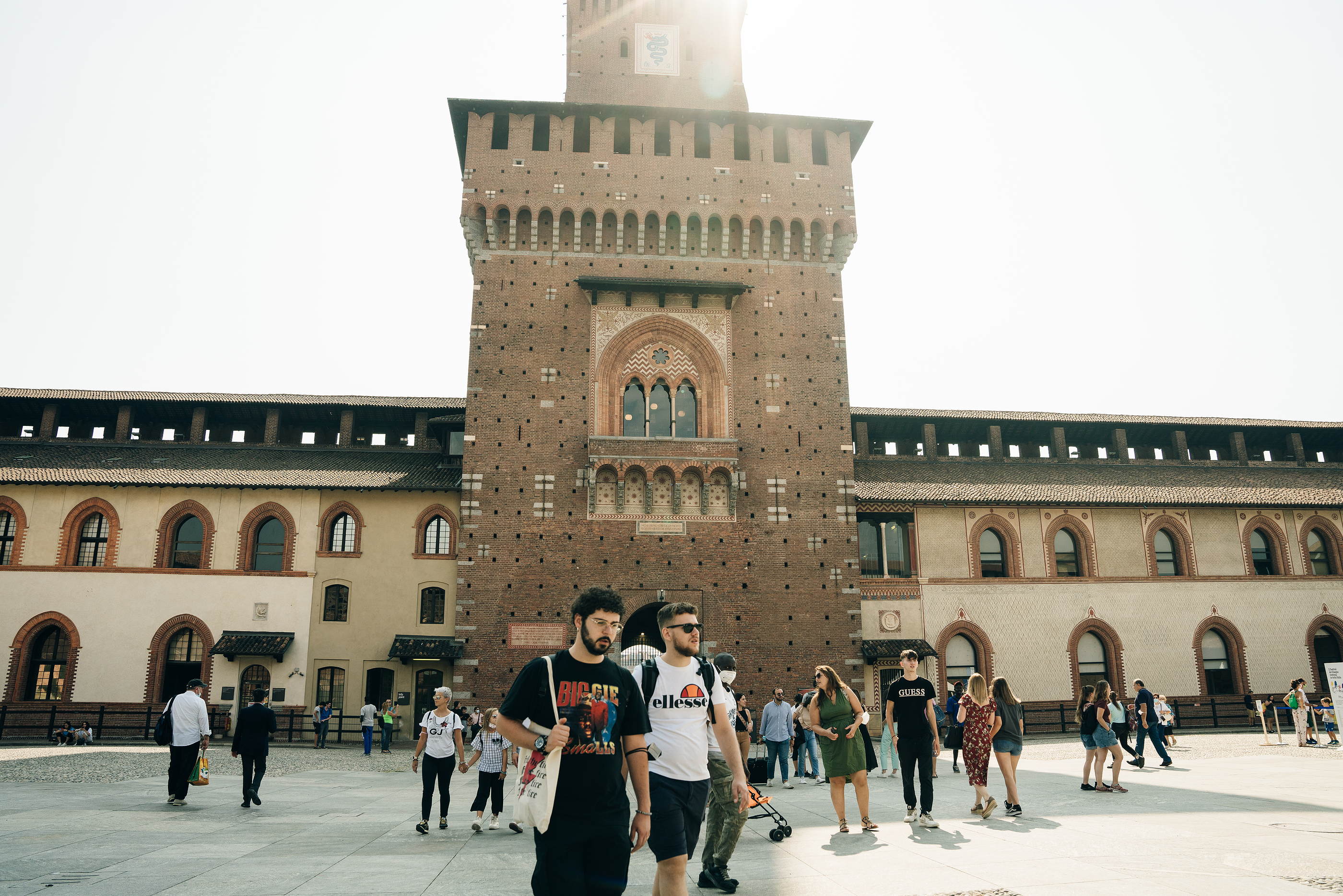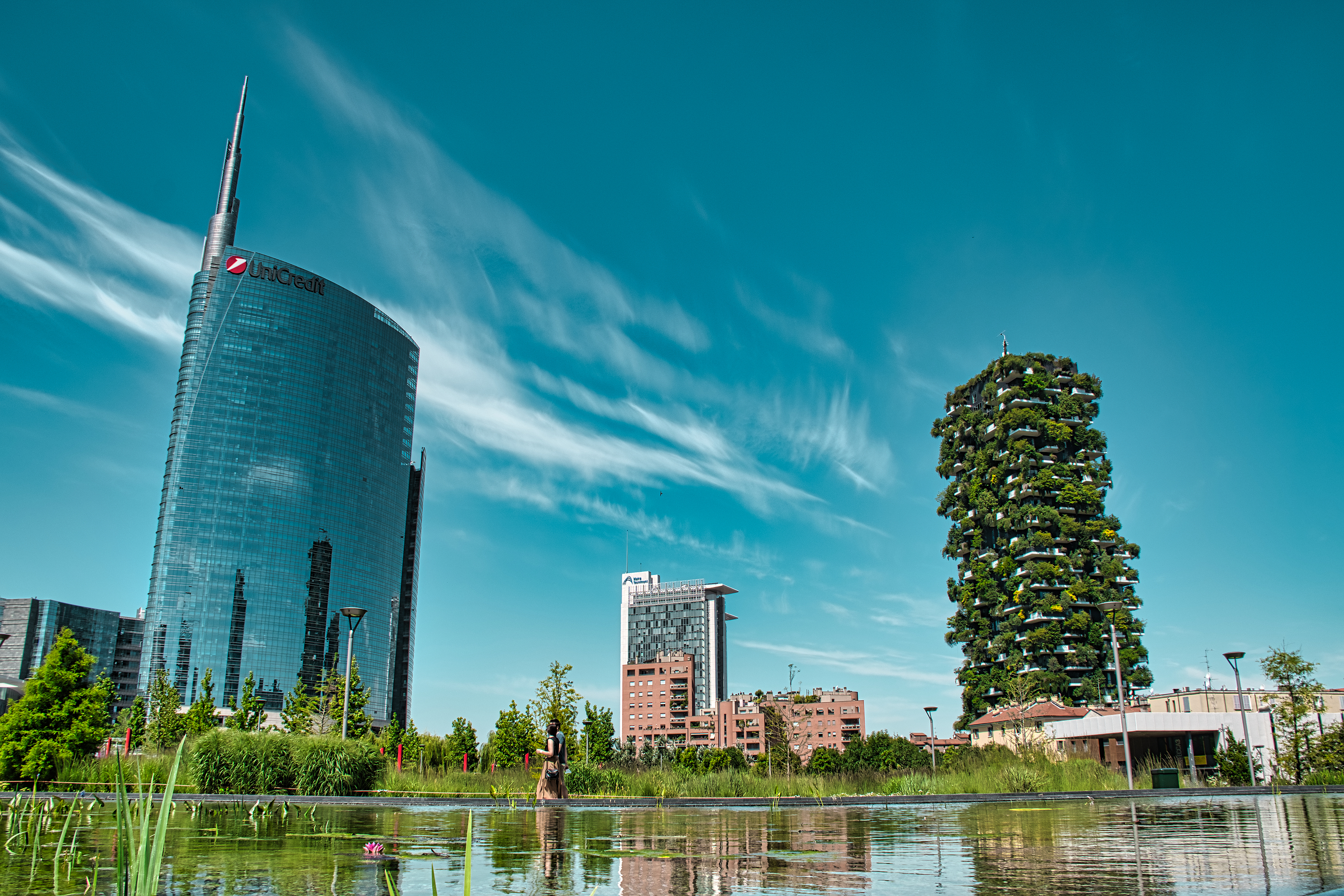Milan is Italy’s most expensive city and a hub of fashion and finance. With its high concentration of luxury brands and Michelin-starred restaurants — particularly in the Duomo, Brera, and other central areas — shopping trips, museum entrance fees, aperitivi and dinners can add up fast, even when the exchange rate is in your favor. However, if you know where to go, there are attractions in Milan that won't cost you a dime. Most, too, are lesser-known sites with fewer crowds — saving you money and time, and freeing you up to explore.
Pirelli HangarBicocca

Once a locomotive factory, this museum and non-profit organization near Milan’s Bicocca University in the eponymous district now has contemporary art installations and solo shows from experimental artists. PirelliHangar Bicocca also has a permanent exhibit, The Seven Heavenly Palaces, by German artist, Anselm Kiefer, commissioned for the museum’s 2004 opening. The installation of seven towering structures weighing 90 tons and made from concrete and shipping containers, was closed during Covid-19 to be used as a vaccination center and has since reopened.
Casa Museo Boschi Di Stefano
Antonio Boschi was an engineer at that Bicocca Pirelli factory and went on to patent the Giubo transmission joint, also known as a flex disk. Boschi later founded a company, GIUBO, to manufacture flex discs for cars, including models for Mercedes-Benz, Land Rover, and Alfa Romeo. Boschi’s wife, Marieda di Stefano, was a ceramics artist, teacher, and art collector, and today their former house, just a block away from the shopping district on Corso Buenos Aires, is a museum showcasing their collection. The home and works were donated to the city by Boschi in 1974 after di Stefano’s death in 1968. The collection includes more than 200 artists with a focus on pieces from 1910 to 1960 from Umberto Boccioni, Fernand Léger, and Amedeo Modigliani.
Museo Studio Francesco Messina
A deconsecrated church, San Sisto, off Via Torino, was once artist Francesco Messina’s studio and became a museum dedicated to him in 1974. Messina is best known for his bronze sculpture of a dying horse in front of public service broadcaster Rai’s Rome headquarters and a towering bronze Minerva statue in Pavia. The museum has approximately 80 sculptures and 30 of the artist’s graphic works on display.
Palazzo Morando Museum of Fashion and Costume

Adjacent to Milan’s high-end shopping areas of Quadrilatero della Moda and Via Monte Napoleone is Palazzo Morando. The 16th-century palace with a Rococò staircase and ornate rooms was donated to Milan by its final owner, countess Lydia Caprara Morando Bolognini, in 1945. Inside, you can see a collection that includes clothing from the 17th to 21st centuries and 18th-century furniture and art.
Cimitero Monumentale
While visiting a cemetery may not be at the top of everyone’s itinerary, the Cimitero Monumentale is also an open-air museum and park with dedications to some of Milan’s most famous residents. Tombs for artists, architects, industrialists, and even race car drivers, are adorned with obelisks and sculptures and housed in temples and monuments with intricate stained glass details and columns. A famedio temple at the entrance celebrates famous people entombed in the cemetery, including novelist Alessandro Manzoni (I Promessi Sposi). To make your visit even more macabre, you can see the Crematorium Temple, a Greek revival building and working crematorium from 1876 until 1992.
MUDEC's permanent collection

The Tortona neighborhood is known for its design houses with headquarters of luxury brands Giorgio Armani and Moncler among others, along with a contemporary art museum, MUDEC. Museo delle Culture opened in 2015 to showcase art from across time periods and geography; the collection includes drawings and paintings by Marc Chagall, for example. While the museum’s temporary exhibitions vary in price depending on the art on display, MUDEC’s permanent collection is free to visit. A curated presentation of art and artifacts reveals the history of culture across continents and periods. The building is a modern marvel of its own — walking inside the museum, you enter a curved interior courtyard with glass walls, which light up the surrounding neighborhood at night.
Castello Sforzesco

Milan’s former Visconti lords constructed the medieval Castello Sforzesco as a primary residence. While you’ll have to buy an entrance ticket to visit the castle’s collections, walking through the castle’s Courtyard of Arms, which was restored in the 1800s and leads you to Parco Sempione, is open to the public for free.
Biblioteca degli Alberi

Leave history behind to visit one of the most modern parts of Milan in Piazza Gae Aulenti and Porta Nuova. You’ll know you’ve arrived when you see a Tesla dealership, a Dyson store, and UniCredit Tower, whose curved and mirrored form is an icon of Milan’s skyline. Just outside the piazza is the Biblioteca degli Alberi, a 22-acre park that opened in 2018. Its name Biblioteca degli Alberi, or “library of trees”, comes from its impressive “catalog” of more than 500 trees and 135,000 plants. It’s an ideal place for a picnic or a walk to also see the twin apartment buildings Bosco Verticale (Vertical Forest), covered in 800 trees.
Navigli and Vicolo dei Lavandai

The Navigli neighborhood is one of the most visited in the city for its nightlife and people-watching along the canal. However, the canals were designed to move goods and people, including the marble blocks used to build the Duomo. Water from the canal was also a source for residents to wash their laundry in the 1700s at the Vicolo dei Lavandai. Another notable stop in Navigli is its flea market on the last Sunday of the month. Although filled with crowds on the weekends and at night, during weekdays it’s a pleasant place for a stroll.
San Maurizio Church

It’s easy to miss San Maurizio, especially if you didn’t know what’s inside of it. Next to the Civic Archaeological Museum, the former Benedictine convent is an early-Christian church, which was rebuilt in the 16th century. Fresco cycles on its ceiling have earned it the nickname of “the Sistine Chapel of Milan.” Behind the main church is the Aula delle Monache (Nuns’ classroom), which is decorated with celestial biblical scenes.
Steer clear of high costs and crowd-induced stress on your next Milan trip by keeping this guide close at hand.








